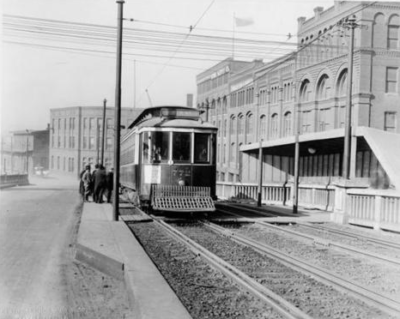Lessons from 1918: Social Distancing Was Most Effective Preventive Measure
 The last flu pandemic to affect the United States to this magnitude was the 1918 influenza. Efforts in Kansas City to limit public gatherings and the spread of the disease were hampered by conflicts between political officials and public health officials. The death rate in St. Louis, which implemented strong and rapid social distancing measures, was much less than in KC. Like now, there was no vaccine for this flu.
The last flu pandemic to affect the United States to this magnitude was the 1918 influenza. Efforts in Kansas City to limit public gatherings and the spread of the disease were hampered by conflicts between political officials and public health officials. The death rate in St. Louis, which implemented strong and rapid social distancing measures, was much less than in KC. Like now, there was no vaccine for this flu.
The lessons of 1918 are very relevant today. Learn more in these links.
What The 1918 Flu Pandemic Taught Kansas City About Dealing With Outbreaks Like The Coronavirus
KCUR – February 26, 2020
A coronavirus lesson? How KC’s response to 1918 flu pandemic caused needless death
 Kansas City Star –
March 15, 2020
Kansas City Star –
March 15, 2020
The 1918 Influenza in Missouri: Centennial Remembrance of the Crisis
Describes public health efforts across Missouri and compares St. Louis with Kansas City
 By David S. McKinsey, MD, Joel P. McKinsey, MD & Maithe Enriquez, PhD
By David S. McKinsey, MD, Joel P. McKinsey, MD & Maithe Enriquez, PhD
Missouri Medicine
July-August 2018
Public health interventions and epidemic intensity during the 1918 influenza pandemic
2007 systematic analysis of 19 public health measures taken in 17 U.S. cities in the 1918 pandemic, published in the Proceedings of the National Academy of Sciences
“Cities in which multiple interventions were implemented at an early phase of the epidemic had peak death rates 50% lower than those that did not and had less-steep epidemic curves. Cities in which multiple interventions were implemented at an early phase of the epidemic also showed a trend toward lower cumulative excess mortality … .”
Rapid Response was Crucial to Containing the 1918 Flu Pandemic
News release from the NIH announcing the 2007 study; includes the following quote from Anthony S. Fauci, MD, then and current director of the NIH National Institute of Allergy and Infectious Diseases: “A primary lesson of the 1918 influenza pandemic is that it is critical to intervene early.”
MORE ON CORONAVIRUS:
Special Message on COVID-19 from KCMS President Dr. Betty Drees



